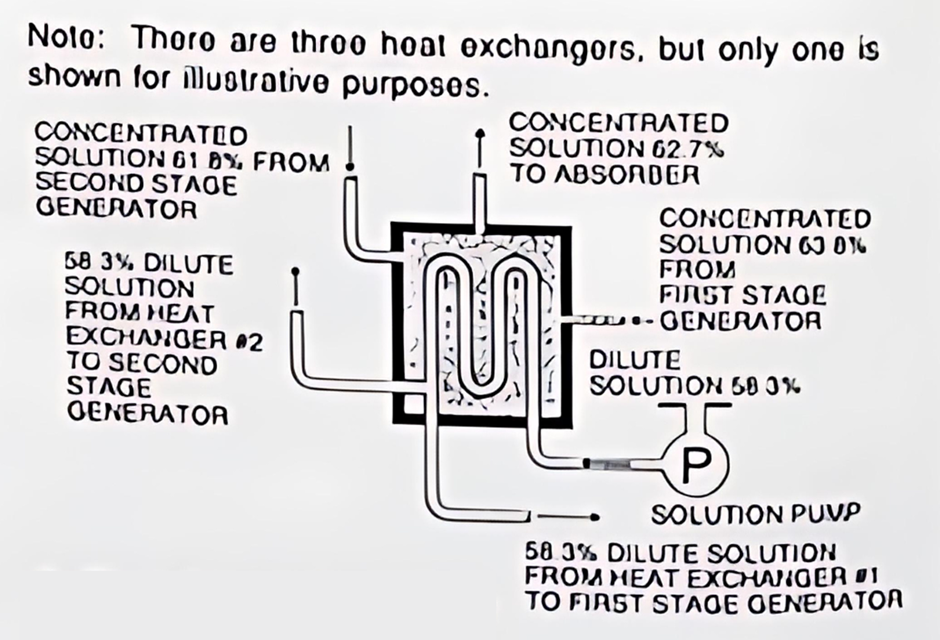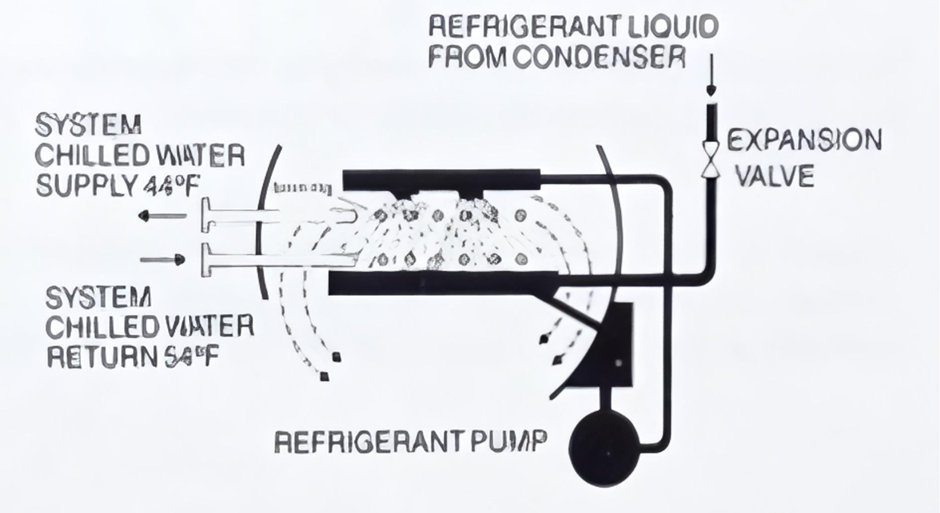Understanding the Two-Stage Steam Absorption Chiller: Efficient Cooling with Water and Lithium Bromide
Two Stage Steam Absorption Chillers
In this blog let us explore the basics of fascinating world of two-stage steam absorption chillers, which utilize water
as the refrigerant and lithium bromide as the absorbent to achieve remarkable
cooling efficiency. Learn how this cutting-edge refrigeration technology
operates through a continuous cycle divided into six crucial steps. From
solution pumps and heat exchangers to condensers and absorbers, understand the
intricate process of creating an extreme vacuum that drives the refrigeration
effect. Discover the benefits of this green technology and its superiority over
conventional systems in terms of efficiency and operational simplicity. Ideal
for anyone interested in HVAC systems, energy efficiency, and sustainable
cooling solutions.
How it works ?:- Steam Machines
Remarkably
efficient two stage absorption refrigeration cycle uses water as the
refrigerant and lithium bromide as the absorbent.
It is the
strong affinity these two substances have for each other that makes the cycle work.
The entire process occurs in hermetic vessels in almost complete vacuum.
The large
diagram above indicates the complete chilling cycle.
The six
steps are detailed below, with "corresponding numbers in the diagram to
show where each step takes place.
Two stage
absorption chilling cycle is continuous; however for the sake of clarity and
simplicity, is divided into six steps.
1. Solution Pump/Heat
Exchangers
A dilute solution (58.3%) of lithium bromide and water descends from the Absorber to the Solution Pump. This flow of dilute solution is split into two streams and pumped through heat exchangers to the First-Stage Generator and to the Second-Stage Generator.
Exclusive
two-way split of solution flow virtually eliminates the possibility of
crystallization (solidification) by allowing the unit to operate at much lower
solution concentration and temperatures than series flow systems.
2.
First-Stage Generator
This
produces hot refrigerant vapor which is sent to the Second-Stage Generator, leaving
a concentrated solution (63.8%) that is returned to the Heat Exchangers.
3.Second-Stage
Generator
The energy
source for the production of refrigerant vapor in the Second Stage Generator is
the hot refrigerant vapor produced by the First-Stage
This is the heart of York's remarkably efficient two-stage absorption effect. The refrigerant vapor produced in the First Stage Generator is increased by 40 % at no additional expense of fuel. The result is much higher than in conventional systems.
This
additional refrigerant vapor (dotted arrows) is produced when dilute solution foam
the Heat exchanger is heated by refrigerant “vapor from the First- Stage
Generator,
The
additional concentrated solution (light grey) that results is returned to the
Heat Exchanger. The refrigerant vapor from the First-Stage Generator condenses
into liquid (dark grey) giving up its heat, and continues to the Condenser.
Refrigerant from two sources - (1) liquid (dark grey) resulting from the condensing of vapor produced in the First-Stage Generator and (2) vapor (dotted arrows) produced by the Second-Stage Generator - enters the Condenser. The refrigerant vapor is condensed into liquid and the refrigerant liquid is cooled. The refrigerant liquids are combined and cooled by condenser water. The liquid then flows down to the Evaporator.
5.Evaporator
The
refrigerant effect cools returning system chilled water in the Evaporator tubes.
The refrigerant liquid /vapor picks up the heat of returning chilled water,
cooling it from 54° F to 44° F. The chilled water is then supplied back to the
system.
As refrigerant liquid/vapor descends to the Absorber from the Evaporator, concentrated solution (62.7%) coming from the Heat Exchanger is sprayed out into the flow of descending refrigerant. The hygroscopic action between lithium bromide and water - and the related changes in concentration and temperature -result in the creation of an extreme vacuum in the Evaporator directly above. The dissolving of the lithium bromide in water gives off heat. which is removed by condenser water entering from the Cooling tower at 85° F and leaving for the Condenser at92° F (black dotted lines). The resultant dilute lithium bromide solution collects in the bottom of the Absorber. where it flows down to the Solution Pump.










Comments
Post a Comment